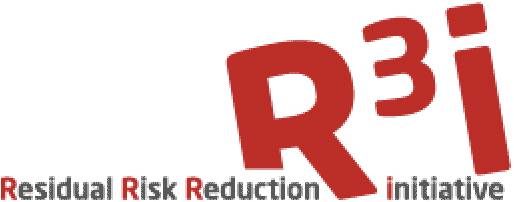
Login
Register







| Your login | |
| Your password | |
| Confirm your password | |
| Your email | |
| I agree to receive the R3i newsletter | |
| STUDY SUMMARY | |||||||||||||||||||||||||||||||||||||||||||||||||||
| Objective: | To investigate the prevalence of atherogenic dyslipidaemia in hypertensive patients and its relationship with cardiovascular risk profile and blood pressure control | ||||||||||||||||||||||||||||||||||||||||||||||||||
| Study design: | Registry; hypertensive patients from the Spanish Ambulatory Blood Pressure Monitoring Registry | ||||||||||||||||||||||||||||||||||||||||||||||||||
| Study population: | 24,351 hypertensive patients (55% men, mean ± standard deviation age 59 ± 14 years, 67% on blood pressure lowering treatment, 25% on statins) attending both primary and secondary care centres | ||||||||||||||||||||||||||||||||||||||||||||||||||
| Primary variable: | Atherogenic dyslipidaemia, defined as the presence of hypertriglyceridemia (>150mg/dl or 1.7 mmol/L) and low plasma concentration of high-density lipoprotein (HDL) cholesterol (<40mg/dL [1.0 mmol/L] in men and <46mg/dL [1.2 mmol/L] in women). | ||||||||||||||||||||||||||||||||||||||||||||||||||
| Secondary variable: |
- Blood pressure control, assessed by office and ambulatory monitoring - Left ventricular hypertrophy, defined by electrocardiographic criteria (Sokolow-Lyon index > 38 mm or Cornell voltage-duration product>2440 mm/ms) - Microalbuminuria, defined as urinary albumin excretion >30 mg/g - Chronic kidney disease (CKD), defined as an estimated glomerular filtration rate <60 mL/min/1.73 m2 using the Chronic Kidney Disease Epidemiology Collaboration equation. |
||||||||||||||||||||||||||||||||||||||||||||||||||
| Methods: | Descriptive analysis; after adjusting for age, sex, and the number of antihypertensive drugs, odds ratios (OR) and 95% confidence intervals (95% CI) were calculated for the association between lipid abnormalities and poor blood pressure control | ||||||||||||||||||||||||||||||||||||||||||||||||||
| Results: |
Table 1. Blood pressure control, renal function and left ventricular hypertrophy categorized by lipid abnormality
AD atherogenic dyslipidaemia; BP blood pressure; CKD chronic kidney disease; LDL-C low-density lipoprotein cholesterol; TG triglycerides *p<0.05 versus other groups **p<0.05 versus patients without lipid abnormalities *** p<0.05 versus patients without atherogenic dyslipidaemia or with low HDL-C |
||||||||||||||||||||||||||||||||||||||||||||||||||
| Authors’ conclusion: | Atherogenic dyslipidaemia is present in more than 10% of hypertensive patients and is associated with other risk factors, organ damage, and poorer blood pressure control. Greater therapeutic effort is needed to reduce overall risk in these patients. | ||||||||||||||||||||||||||||||||||||||||||||||||||
COMMENT
A core mission of the Residual Risk Reduction Initiative (R3i) is to raise awareness of atherogenic dyslipidaemia as an important contributor to lipid-related residual cardiovascular risk (1). However, evidence from large-scale prospective surveys, such as EUROASPIRE, show that while management of elevated low-density lipoprotein cholesterol in high risk patients is improving, up to one in three patients have atherogenic dyslipidaemia (2). This worrying finding, exacerbated by an increasing prevalence of obesity and type 2 diabetes (3), clearly highlights the need for further education of clinicians about the importance of atherogenic dyslipidaemia, and the need to manage this dyslipidaemia appropriately.
A renewed focus on implementation of life style changes is clearly essential to addressing the upsurge in lifestyle-related dyslipidaemia. However, many high risk patients, such as those in the Spanish Ambulatory Blood Pressure Monitoring Registry with both atherogenic dyslipidaemia and hypertension, will also require pharmacotherapeutic intervention. So far options are limited, with evidence supporting the combination of a statin plus fibrate as the preferred approach (4). Novel agents, such as selective peroxisome proliferator-activated receptor alpha modulators (SPPARMs) with a profile of lipid-modifying, insulin-sensitizing and anti-inflammatory effects (5), may offer new potential for the future.
| References |
1. Fruchart JC, Davignon J, Hermans MP et al. Residual macrovascular risk in 2013: what have we learned? Cardiovasc Diabetol 2014;13:26. 2. Reiner Z, De Bacquer D, Kotseva K et al. Treatment potential for dyslipidaemia management in patients with coronary heart disease across Europe: findings from the EUROASPIRE III survey. Atherosclerosis 2013;231:300-7. 3. Kotseva K, Wood D, De Bacquer D, et al. EUROASPIRE IV: A European Society of Cardiology survey on the lifestyle, risk factor and therapeutic management of coronary patients from 24 European countries. Eur J Prevent Cardiol 2015; Epub ahead of print. 4. Sacks FM, Carey VJ, Fruchart JC. Combination lipid therapy in type 2 diabetes. N Engl J Med 2010;363:692-4. 5. Fruchart JC. Selective peroxisome proliferator-activated receptor α modulators (SPPARMα): the next generation of peroxisome proliferator-activated receptor α-agonists. Cardiovasc Diabetol 2013;12:82. |
| Key words | residual cardiovascular risk; atherogenic dyslipidaemia; prevalence; registry |